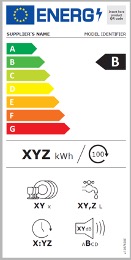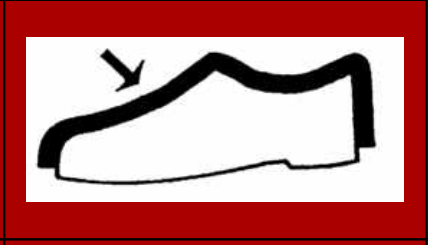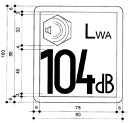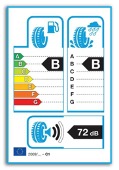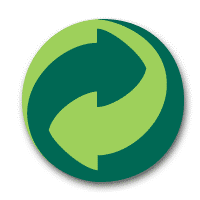Summary
There is a broad array of EU legislation pertaining to the marking, labeling, and packaging of products in the European Union. The first step in investigating the marking, labeling, and packaging legislation that might apply to a product entering the European Union is to draw a distinction between what is mandatory and what is voluntary. Decisions related to mandatory marking, labeling, or packaging requirements may sometimes be left up to individual Member States. Furthermore, voluntary marks and labels are used as marketing tools in some Member States but not in others. This section is focused primarily on the mandatory marks and labels seen most often on consumer products and packaging, which are typically related to public safety, health, or environmental concerns. It also includes a brief overview of a few mandatory packaging requirements, as well as more common voluntary marks or labels used in EU markets.
It is also important to distinguish between marks and labels. A mark is a symbol and/or pictogram that appears on a product or its respective packaging. These range in scope from signs of danger to indications of methods of proper recycling and disposal. The intention of such marks is to provide market surveillance authorities, importers, distributors, and end users with information concerning safety, health, energy efficiency and environmental issues relating to a product. Labels, on the other hand, appear in the form of written text or numerical statements, which may be required but are not necessarily universally recognizable. Labels typically indicate more specific information about a product, such as measurements or an indication of materials that may be found in the product (such as in textiles or batteries).
Mandatory Marks and Labels
- Automotive
- Cosmetics
- Dangerous substances
- Electrical and electronic equipment
- Energy efficiency
- Explosive atmosphere
- Food-related
- Footwear
- Household Appliances
- Maritime
- Measuring instruments
- Noise Emissions
- Pricing
- Pyrotechnics
- Recycling; separate collection
- Tire labeling
- Textiles
- Units of measurement
- Wood packaging
Voluntary Marks and Labels
- Materials in contact with food
- e-mark
- Eco-Label
- The Green Dot
- Recycling marks
Voluntary and mandatory marks and labels apply to all Member States, countries in the European Economic Area, European Free Trade Association, as well as candidate countries seeking membership to the European Union.
Mandatory Marks and Labels
CE Marking
CE marking is probably the most widely used and recognized marking required by the European Union. Found in all “New Approach” legislation with a few exceptions, the placement of the CE mark on a product serves as the manufacturer’s declaration that the item meets all EU regulatory requirements (typically related to safety, health, energy efficiency, or environmental concerns) for marketing that item in the European Economic Area, which comprises the 27 Member States of the European Union and Iceland, Liechtenstein, and Norway. The CE mark does not certify that a European-based regulatory authority has approved a product for sale in the EU. CE marking is required for the following products and product families:
- Cableway installations
- Civil explosives
- Construction products
- Electrical/electronic products
- Electromagnetic compatibility
- Low voltage
- Restriction of Hazardous Substances (RoHS)
- E-bicycles and scooters
- Energy efficiency
- Equipment and protective systems in potentially explosive atmospheres
- Gas appliances
- Hot water boilers
- Lifts
- Machinery
- Medical devices
- Non-automatic weighing instruments
- Personal protective equipment
- Pressure equipment
- Pyrotechnics
- Radio equipment
- Recreational crafts
- Refrigeration appliances
- Simple pressure vessels
- Toys
Not all products require a CE Mark. Only products that fall under the regulations or directives for the categories above have the CE Mark. EU law prohibits companies from attaching a CE mark on other products, such as cosmetics or chemicals. U.S. exporters should also note that companies often incorrectly or falsely CE mark their products.
Effective July 16, 2021, the EU required all CE marked products to have a label that identified a point of contact within the region. This requirement applies to products sold online and through traditional distribution channels. The label must give a contact name and address for customs and market surveillance authorities to reach out to for questions about the product. If an importer or distributor cannot fulfill that role, an exporter will have to appoint an Authorized Representative in the European Union or use a shipping platform to act in that capacity. The Authorized Representative is responsible for ensuring the availability of the conformity documentation, cooperating with market surveillance authorities, and informing authorities when they have reasons to believe that a product presents a risk. In March 2021, the European Commission published guidelines under Article 4 of the Regulation (Regulation (EU) 2019/1020).
For more information on obtaining a CE Mark, please contact the U.S. Mission to the European Union.
Automotive
The e-mark is a mark for approved vehicles and vehicle components given by a national certifying authority. The certifying body issues an e-marking certificate after inspection and approval of compliance of a vehicle or its component. The number shown in the rectangle on the label indicates the Member State in which the approval process was conducted. A base approval number must also be provided adjacent to this certification. This four-digit number will correspond to the directive and type of device in question. The country-number correlation is as follows (this is not an exhaustive list):
| 1 | Germany | 6 | Belgium | 18 | Denmark |
| 2 | France | 9 | Spain | 21 | Portugal |
| 3 | Italy | 11 | UK | 23 | Greece |
| 4 | Netherlands | 13 | Luxembourg | 24 | Ireland |
Photometry
A similar marking is an ‘E’ surrounded by a circle, which applies to the testing of headlight lamps, brake light lamps, and turning signal lamps of all vehicles seeking market entry into the European Union. These include consumer vehicles, low-volume production trucks, light and heavy goods vehicles, trailers, motorcycles, cranes, agriculture and forestry tractors, and special-purpose and off-road vehicles. (The number is the country number; in this case, E4 refers to the Netherlands.)
Cosmetics
According to the Cosmetics Regulation (1223/2009), containers and packaging in certain cases must include:
- The name, trade name and address, or registered office, of the manufacturer or person responsible for marketing the cosmetic product within the European Union.
- The nominal contents at the time of packaging (by weight or volume).
- The date of minimum durability indicated by “best before end,” for products with a minimum durability of less than thirty months. In this case, this symbol must be included on the packaging:
- The period after opening during which the product can be used without harm to the consumer, for products with a minimum durability of less than thirty months as indicated by a symbol representing an open cream jar:
- Particular precautions for use.
- The batch number or product reference for identification.
- The product’s function.
If it is impossible for practical reasons to print on the packaging all the conditions of use and warnings, an enclosed leaflet, label, or tape must be provided, and the following symbol has to be on the packaging:
Member States are to draw up procedures for providing the information set out above in the case of cosmetic products that have not been pre-packaged. The product function and list of ingredients must appear also on the container or packaging. Member States may stipulate that the information on the label is provided in their national or official language(s).
With respect to the labeling of nanomaterials present in cosmetics, the Cosmetics Regulation indicates that “all ingredients present in the form of nanomaterials shall be clearly indicated in the list of ingredients” and that “the names of such ingredients shall be followed by the word ‘nano’ in brackets.”
Dangerous Substances
According to the Classification, Labelling and Packaging of Hazardous Substances (CLP) Regulation (Regulation 1272/2008), a label of dangerous substances must indicate the name of the substance; the origin of the substance, specifically, the name and address of the manufacturer or distributor; the danger symbol and an indication of danger involved in the use of the substance; and a reference to the special risks arising from such dangers.
The dimensions of the label must not be less than a standard A8 sheet of paper (52 mm x 74 mm), and each symbol must cover at least one-tenth of the label’s surface area. Member States may require their national language(s) to be used in the labeling of dangerous substances. If the packaging is too small, the labeling may be affixed in some other manner. The packaging of products considered dangerous, but are neither explosive nor toxic, may go unlabeled if the product contains such small quantities of dangerous substances that there is no danger to consumers.
Symbols must be employed if the substance can be defined as explosive, oxidizer, flammable, harmful, toxic irritant, corrosive, or harmful to environment. Containers of hazardous substances should include, in addition to the appropriate symbols, a raised triangle to alert the vision-impaired to their contents. Note that the CLP Regulation has undergone numerous amendments relating to, for example, the marking and labeling of additional substances, including implementing the classification, labeling, and packaging requirements for chemicals based on the United Nation’s Globally Harmonized System.
The Waste Electrical and Electronic Equipment Directive (WEEE)
The WEEE directive (Directive 2012/19/EU) is designed to tackle the rapidly increasing waste of electrical and electronic equipment and it complements European Union measures on landfills and waste incineration. It also impacts the design of products in order to reduce material use and facilitate reuse and recycling. It sets collection, recycling, and recovery targets for all types of electrical and electronic equipment. Businesses should check requirements for the Member State to which the product will be imported. Depending on the country and quantities placed on the market, the party responsible for placing the product on the market will have to register with the appropriate authorities, join a producer compliance scheme, or set up an individual scheme to meet their take-back and recycling obligations. The wheel bin symbol indicates that the product is not to be discarded with normal household waste. In instances where this symbol cannot be displayed on the equipment itself, it should be included on the packaging.
Energy Labelling
Energy labels, according to Regulation 2017/1369, show how appliances rank on a scale from A (green), the most energy efficient, to G (red), according to their energy consumption. These labels apply to different categories of household appliances including air conditioners, refrigerators, televisions, washing machines, space heaters, and solid fuel boilers, among others. They are meant to help consumers choose the less energy consuming products and promote product ecologically friendly products. As of March 1, 2021, new energy labels include QR codes that consumers can scan. In order to facilitate the energy label use, the European Union maintains a site for generating energy labels.
In addition, since January 1, 2019, manufacturers, importers, and authorized representatives of non-EU manufacturers have to register all products requiring energy labels in the European Product Database for Energy Label and Eco-Design, access to which is available to EU consumers.
Devices for Use in Potentially Explosive Atmosphere (ATEX)
In addition to applying a CE marking for products falling under the ATEX Directive (2014/34/EC), which defines essential health and safety requirements and conformity assessment procedures of equipment or protective systems intended for use in potentially explosive atmospheres (e.g., offshore platforms, mines), it is necessary to display the “Ex” mark, which is a specific marking for hazardous location equipment showing compliance with the ATEX directive. A symbol designating the product group or category as specified in the directive will be located next to the “Ex” mark.
Do Not Eat
Regulation No 450/2009 on active and intelligent materials and articles or parts that come into contact with food includes labeling for the “Do Not Eat” symbol. To allow identification by the consumer of non-edible parts, active and intelligent materials and articles or parts, if they are perceived as edible, must be labeled with the words Do Not Eat and include, when technically possible, the above symbol.
Footwear
Directive 94/11/EC covers labeling for the materials used in footwear, including parts sold separately and rules regarding labeling. Labels must convey information relating to the upper part of the shoe (see above), the lining and insole sock, and the outer sole of the footwear article. The information must be conveyed by means of approved pictograms or textual information, as defined by the Directive.
The label must be legible, firmly secured, and accessible, and the manufacturer or the authorized representative established in the European Union is responsible for supplying the label and for the accuracy of the information contained therein. Only the information provided in the Directive needs to be supplied. No restrictions are preventing additional information from being included on the label.
Maritime
The “wheel mark” shown above is the equivalent of CE marking for marine equipment. It applies to equipment for use on board any new ship in the European Union, wherever the ship is situated at the time of construction, and on equipment placed on board existing ships in the European Union, whether for the first time or to replace equipment already carried on board. It does not apply to equipment already on board on the date on which the directive entered into force in 1997. The directive applies to life-saving appliances, marine pollution prevention, fire protection, navigation equipment, and radio communication equipment. A revised Marine Equipment Directive (2014/90/EC) was adopted in July 2014 and is applicable since September 18, 2016.
Noise Emission of Outdoor Equipment
Machines used outdoors are subject to CE marking requirements in line with the Outdoor Noise Directive (2000/14/EC). Along with the CE mark, products that fall under the Directive must also have marking, above, indicating the “guaranteed sound power level.”
Packaging Recycling
Plastic Recycling Symbol
The Mobius loop (sometimes known as the chasing arrows), is found on products throughout Europe and indicates that the product can be recycled. As well as being used on printed packaging, the chasing arrows symbol is sometimes featured in the molds of glass, metal, paper, or plastic products.
The Mobius loop with a number at the center and a letter code indicates the type of plastic the packaging is made from. The above symbol is an example of how a plastic’s type may be indicated on a product. As part of the EU voluntary identification system for plastics, according to Decision 97/129/EC, the following marks are used for the most common types of plastics:
Table: Commonly Used Types of Plastics
EU Number | Abbreviated Description | Full Plastic Description |
|---|---|---|
1 | PET | Polyethylene Terephthalate |
2 | HDPE | High Density Polyethylene |
3 | PVC | Poly Vinyl Chloride |
4 | LDPE | Low Density Polyethylene |
5 | PP | Polypropylene |
6 | PS | Polystyrene |
There are no EU-wide symbols used to designate the recyclable nature of glass. However, it is certainly encouraged on the national level with an array of symbols. The one shown above is a sample to show recyclability.
Textiles
Textile products must be labeled or marked whenever they are put on the market for production or sale. The names, descriptions, and details of a textile’s fiber content must be indicated on products available to consumers. With the exception of trademarks or the name of the undertaking, other types of required information must be listed separately. Member States may require that their national language be used on the labeling. Marking required by the regulation (1007/2011/EU) include textile fiber names, related labelling, and marking of the fiber composition of textile products.
Tire Energy Labelling
Tire label legislation (Directive 1222/2009/EC and Directive 228/2011/EC) requires that tire manufacturers declare fuel efficiency, wet pavement grip, and external rolling noise performance of C1, C2, and C3 tires (i.e., tires mainly fitted on passenger cars, light vehicles, and heavy-duty vehicles). The energy efficiency class ranges from A (most efficient) to G (least efficient). The wet grip class ranges from A (shorter braking distance on wet asphalt) to G (longest). The external noise class ranges from A (less noise outside the vehicle) to B. The objective of the regulation is to provide beneficial information for the consumer and to contribute to a more energy efficient transport policy.
Units of Measurement
The use of units of measurement in the European Union is set down in the EU Metric Directive (Directive 80/181/EEC). The Directive, which went into effect on January 1, 2010, was modified to allow the continuation of both supplemental (e.g., U.S. customary, inch-pound) and metric units for consumer goods sold in the European Union. Similarly, the EU pre-packaging Directive (Directive 76/211/EEC) specifies permissible ranges of nominal quantities, container capacities, and the weights or volumes of prepackaged products. It helps guarantee the net quantity in prepacks and the volume of product in bottles. Manufacturers are advised to take note that all labels require metric units, although dual labeling is also acceptable. The e-mark is referred to as the estimated sign, ⟨℮⟩, which also refers to the e-mark or quantité estimée and acts as a metrological “passport” to facilitate the free movement of prepackaged goods. It guarantees that certain liquids and other substances have been packed by weight or volume in accordance with the directives. While compliance is not mandatory, free movement throughout the European Union is guaranteed for prepackaged products that comply with the provisions of the directive.
Containers with an e-mark also bear an indication of the weight or volume of the product, known as its “nominal” weight or volume. The packer (or importer, if the container is produced outside the European Union) is responsible for ensuring that the containers meet the directive’s requirements.
Voluntary Marks and Labels
Materials in Contact with food
Manufacturers of containers, plates, cups, and other material that is intended to come into contact with food are required to check the compliance of their product with EU chemical safety requirements. Using the cup/fork symbol above shows compliance with these requirements. It is mandatory to comply with the legislation, but the use of the symbol on products is voluntary.
European Ecolabel
The European Ecolabel enables European consumers, including public and private purchasers, to easily identify officially approved green products across the European Union, Norway, Liechtenstein, and Iceland. Introduced in 1992, the label communicates to the customer that the marked products meet specific eco-friendly criteria that have been developed to apply to everyday consumer goods and services. Though voluntary, the mark can help create new business opportunities, particularly paired with the expansion of green public procurement in Europe.
The symbol may apply to twenty-five products and services groups including cleaning products, electronic equipment, household equipment, or gardening. The Ecolabel product catalogue provides information on how to apply for the EU Ecolabel. Manufacturers should be aware that similar eco-friendly markings are often used nationally, such as the Nordic Swan or the German Blue Angel.
Green Dot
The Green Dot is a scheme in which participating bodies coordinate the collection, sorting, and recovery of used packaging. This system is administered according to national packaging laws (e.g., adhered to by packaging manufacturers, fillers, retailers, and importers), and it should be noted that all participating national systems operate independently. The umbrella organization, Pro Europe, is responsible for managing the Green Dot labeling system in Europe. Not all Member States have Green Dot organizations. The Green Dot is only mandatory in Spain and Cyprus.
Updated Medical Device Regulations
The EU’s revised Medical Device Regulation went into effect in May 2021. On October 14, 2021, the European Commission proposed a progressive roll-out of the new In Vitro Diagnostic Medical Devices Regulation, which went into effect in May 2022. The proposal does not change any requirements of the In Vitro Diagnostic Regulation in substance but only changes the transitional provisions to allow for the Regulation’s progressive rollout. On January 6, 2023, the Commission issued a proposal extending the period during which devices compliant with the old EU legislation on medical devices can continue to be placed on the EU market. The Commission has also proposed to eliminate any ‘sell-off’ restrictions for devices legally placed on the market during the transition time. The length of the proposed transition periods depends on the type of device: higher risk devices such as HIV or hepatitis tests (“class D”) and certain influenza tests (“class C”), have a transition period until May 2025 and 2026, while lower risk ones such as class B and A sterile devices have a transition period until May 2027. This extension has been sought on the grounds that the European Union has not named enough notified bodies to meet the demand for certifications caused by this regulation. In addition, restrictions put into place due to the COVID-19 pandemic have prevented many audits from taking place to certify device requirements under the Medical Device Regulation. The European Commission has published an official notice allowing notified bodies to conduct initial audits of medical device quality management systems virtually, which includes audits of manufacturers’ suppliers and subcontractors to verify their manufacturing and other processes, but this applies to the Medical Device Regulation and not the In Vitro Diagnostic Device Regulation.
Updated Machinery Regulation
In April 2021, the Commission released a Proposed Regulation for the Safety of Machinery to replace the current Machine Safety Directive, which has been in effect since 2006. Machinery in the European Union is broadly defined as consisting of an assembly of components, at least one of which moves, for a specific application. The drive system of machinery is powered by energy other than human or animal effort. The new Machine Safety Regulation officially came into force in July 2023. The regulation provides a new framework to the machinery and equipment industry including requirements around cyber security and AI and will be applied beginning in 2027.






